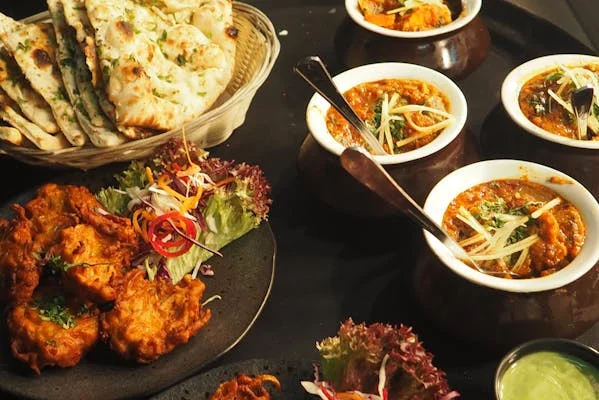Cevurı, a term that may sound unfamiliar to many, has a rich cultural history and plays a significant role in various practices across different regions. Understanding its origins, uses, and significance can provide insight into not just its physical form, but also its deeper cultural relevance. In this article, we will explore the various facets of cevurı, how it is utilized, and why it holds an important place in specific traditions.
What is Cevurı?
Cevurı is a term that can be traced back to multiple origins, depending on the geographical region and context in which it is used. It often refers to an item, practice, or even a concept that has cultural ties to specific communities. While the term might not be widely known globally, its significance is immense in the areas where it is used.
Cevurı can be found in historical records and references in many ancient texts, demonstrating its longevity and importance across generations. Whether it’s related to a cultural tradition, a religious practice, or a specific technique, cevurı encapsulates a piece of history that has stood the test of time.
Historical Origins of Cevurı
The Ancient Roots of Cevurı
The history of cevurı dates back centuries, with its origins rooted in ancient cultures. Historically, cevurı was often linked to specific rituals or symbolic practices, depending on the region. Early records suggest that it was considered sacred in many traditions, used in ceremonies to symbolize purity, balance, or connection to the divine.
The term itself may have evolved over time, but its essence has remained relatively unchanged. Cevurı was often passed down through generations, preserved as part of cultural heritage. As with many traditional practices, its exact meaning may vary slightly based on the context in which it is used, but its cultural relevance remains steadfast.
Regional Variations in the Use of Cevurı
While the word cevurı may be common in some regions, it has different meanings depending on the local customs. In certain places, it could refer to a form of art, a culinary practice, or even a specific religious symbol. For instance, cevurı in one culture could be associated with a religious rite, while in another, it might represent a form of craftsmanship or artistry.
Understanding the regional nuances of cevurı can help in appreciating the broader context in which it exists. It also highlights how certain terms evolve and adapt to local traditions and practices, maintaining their relevance across different cultures and time periods.
Cevurı in Modern-Day Practices
The Revival of Cevurı in Contemporary Times
In recent years, there has been a resurgence of interest in traditional practices, and cevurı is no exception. Many people are turning back to their cultural roots, seeking ways to reconnect with ancient traditions that may have been lost over time. This revival is seen in the resurgence of traditional art forms, including those related to cevurı.
As people look to preserve and celebrate their heritage, cevurı has found a renewed place in modern society. It is often celebrated in festivals, exhibitions, and even modern reinterpretations, as artisans and practitioners bring new life to this age-old tradition.
Cevurı in Modern Art and Craftsmanship
One of the most exciting areas where cevurı has reemerged is in the world of contemporary art and craftsmanship. Artists are incorporating traditional techniques associated with cevurı into their work, creating innovative pieces that reflect both the past and the present.
For example, some artisans specialize in recreating the intricate designs and methods originally tied to cevurı, adding modern twists to the pieces. These modern interpretations have helped preserve the art form while making it accessible to younger generations who may not be familiar with its traditional roots.
The Cultural Significance of Cevurı
Cevurı in Religious and Spiritual Practices
In many cultures, cevurı holds religious or spiritual significance. It is used in rituals or ceremonies that are deeply meaningful to those who practice them. Whether it’s part of a healing process, a celebratory event, or a devotional act, cevurı is a key element in connecting the physical and spiritual worlds.
Religious texts and cultural stories often speak of cevurı as a tool or symbol used by spiritual leaders or community elders to bridge the gap between the divine and the earthly. Its role in these practices highlights its deep cultural importance, not just as a physical object or term, but as a spiritual symbol of faith, devotion, and continuity.
The Symbolism of Cevurı in Traditional Ceremonies
Cevurı is often imbued with symbolic meaning in traditional ceremonies. Depending on the context, it may symbolize various virtues such as strength, purity, or the passing of knowledge. In some cultures, the use of cevurı in ceremonies marks important life stages, from birth to death, with each stage being honored through different rituals involving cevurı.
These ceremonies not only celebrate the individual’s journey but also strengthen the ties within the community. The role of cevurı in such ceremonies cannot be overstated, as it often plays a key part in preserving the collective cultural identity.
How to Incorporate Cevurı into Your Life
Learning the Craft of Cevurı
If you are interested in learning more about cevurı, consider exploring its artistic and cultural dimensions. Many communities offer workshops or classes where individuals can learn traditional crafting techniques related to cevurı. This hands-on experience allows individuals to connect with the history and culture behind the practice while acquiring valuable skills.
By learning the craft of cevurı, you not only preserve a valuable tradition but also gain a deeper appreciation for the craftsmanship involved. Whether you pursue it as a hobby or a profession, engaging with cevurı offers a unique way to connect with the past while contributing to the future of this tradition.
Cevurı as a Source of Inspiration
Many people find inspiration in the practices and traditions associated with cevurı. From art and design to personal reflection and spirituality, cevurı offers endless possibilities for creative expression. It can inspire you to explore new ways of incorporating cultural heritage into your everyday life.
Consider exploring cevurı through different forms of creative expression, such as painting, sculpture, or even writing. Its rich cultural background and symbolic meanings offer a wellspring of inspiration for those looking to create something meaningful.
The Future of Cevurı
Maintaining the Legacy of Cevurı
As with many traditional practices, one of the greatest challenges facing cevurı is the risk of it being lost over time. In a rapidly changing world, the preservation of cultural heritage becomes more critical than ever. Efforts to maintain the legacy of cevurı include educational programs, cultural preservation initiatives, and the promotion of traditional craftsmanship.
By fostering an appreciation for cevurı among younger generations and encouraging its practice, communities can ensure that this valuable tradition is passed down for generations to come.
The Role of Technology in Preserving Cevurı
In today’s digital age, technology plays an increasingly important role in preserving and promoting traditional practices like cevurı. Online platforms and social media allow individuals and communities to share their knowledge, experiences, and creative expressions related to cevurı, reaching a global audience.
Digital tools such as video tutorials, virtual workshops, and online forums provide new ways to engage with cevurı, ensuring its continued relevance in modern society. By combining tradition with innovation, technology can help safeguard the future of cevurı while allowing it to evolve in exciting new directions.
Conclusion
Cevurı, while perhaps unfamiliar to some, holds an important place in cultural history and continues to inspire creativity, spirituality, and craftsmanship today. Whether through its historical roots, its role in modern art, or its significance in spiritual practices, cevurı offers much to explore and appreciate. By learning more about cevurı, individuals can not only connect with their heritage but also contribute to the preservation of this rich tradition for future generations.
FAQS
1. What is the origin of this cultural practice?
This practice has ancient roots that span multiple regions, each with its unique history and significance. It has evolved over centuries, maintaining its relevance in cultural and spiritual rituals.
2. How is it used in modern society?
In contemporary times, the tradition is being revived through art, craftsmanship, and spiritual practices. Many people have started integrating it into their daily lives, either as a creative expression or through cultural events.
3. What role does it play in religious ceremonies?
It holds a deep symbolic meaning in many spiritual practices, often used in ceremonies that mark important life events or connect practitioners with the divine. It is considered a vital part of maintaining spiritual traditions.
4. Can anyone learn the craft associated with this practice?
Yes, many communities offer workshops and classes for those interested in learning the traditional techniques. Whether for personal interest or professional development, it’s accessible to anyone willing to learn.
5. How does this tradition influence modern art?
Many contemporary artists draw inspiration from these practices, incorporating traditional techniques into modern art forms. This fusion of past and present helps preserve the cultural heritage while allowing for creative evolution.
6. What is its cultural significance?
It symbolizes a bridge between generations, preserving historical customs and ensuring that cultural identity is passed down through various mediums like art, ceremony, and community rituals.





